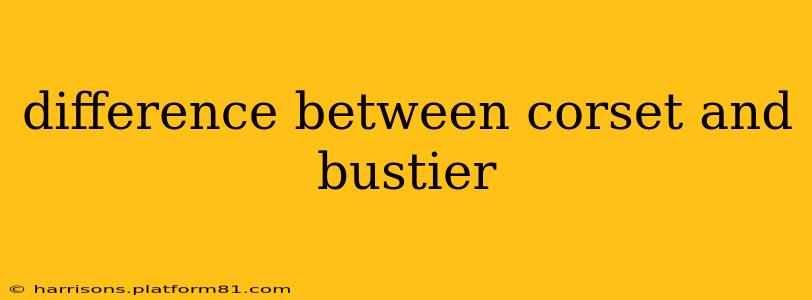Corsets and bustiers are both figure-flattering garments known for their shaping capabilities, but they differ significantly in their construction, purpose, and overall aesthetic. Understanding these key differences will help you choose the perfect garment for your needs.
What is a Corset?
A corset is a close-fitting, structured undergarment designed to cinch the waist and reshape the torso. Historically, corsets were primarily used to create a specific silhouette, often a dramatically narrowed waist. They are typically made from multiple layers of fabric, boning (such as whalebone, steel, or plastic), and strong lacing at the back. This intricate construction provides significant support and shaping.
Corsets are known for their:
- Strong boning: Provides robust support and shaping.
- Extensive lacing: Allows for a highly adjustable fit, often resulting in a very tight waist.
- Multiple layers: Contribute to the garment's overall strength and shaping capabilities.
- Length: Typically extends from below the bust to the hips, encompassing a larger area of the torso.
- Purpose: Primarily for shaping and waist reduction.
What is a Bustier?
A bustier is a more modern, typically less restrictive garment, often worn as outerwear. It's designed to enhance the bust and provide some waist shaping, but it doesn't offer the same level of extreme waist reduction as a corset. Bustiers are often constructed with less boning and may feature decorative elements like embroidery, lace, or embellishments.
Bustiers are characterized by:
- Lighter boning: Offers less support and shaping than a corset.
- Less extensive lacing or closure: Frequently uses hooks, zippers, or less intricate lacing systems.
- Fewer layers: Generally thinner and less structured than a corset.
- Shorter length: Often ends at the waist or just below, covering a smaller area of the torso.
- Purpose: Primarily for shaping, enhancing the bust, and creating a flattering silhouette. Often worn as outerwear.
What is the difference between a corset and a bustier? A Summary Table
| Feature | Corset | Bustier |
|---|---|---|
| Structure | Highly structured, strong boning | Less structured, lighter boning |
| Lacing | Extensive, back lacing | Limited or no lacing, hooks/zipper |
| Layers | Multiple layers | Fewer layers |
| Length | Extends from below bust to hips | Often ends at or below the waist |
| Waist Reduction | Significant waist reduction | Moderate waist reduction |
| Purpose | Shaping, waist reduction | Shaping, bust enhancement, outerwear |
| Comfort Level | Can be less comfortable, requires a proper fit | Generally more comfortable |
How do I know which one is right for me?
Consider the following factors when choosing between a corset and a bustier:
- Desired level of waist reduction: For dramatic waist reduction, choose a corset. For moderate shaping, a bustier is suitable.
- Intended use: If you want a garment primarily for shaping under clothing, a corset is a good option. If you want something to wear as outerwear, a bustier might be preferable.
- Comfort level: Bustiers are generally more comfortable for everyday wear. Corsets require a proper fit and might feel more restrictive.
- Aesthetic preference: Consider the overall look you want to achieve. Corsets often have a more vintage or dramatic look, while bustiers can be more modern and versatile.
By understanding the key differences between corsets and bustiers, you can confidently choose the garment that best complements your style and needs. Remember that proper fit is crucial for both garments to ensure comfort and effectiveness.
